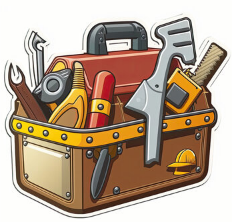Multiple Arrows in the Quiver
Duncan Waldie
PepsiCo Foods Canada

We are all faced with a variety of challenges and tasks in our day-to-day responsibilities whether at home or in our careers. This naturally brings on an ever-increasing need to utilize multiple sources of reliable data to help make wise decisions in a limited amount of time.
Often as Technicians, Team Leads, Reliability Engineers, etc., we are faced with the questions of time. How much longer will it take to get this asset back up and running? How long is the lead time for these parts? And my favorite, which I am sure many have heard, how long until this machine will completely fail? My answer to this is always the same, “Well, if I knew when this would happen, I would probably still work here but for a lot more money!”
In their defense, I find it is understandable that this question gets asked. But I also recognize this as a great moment for instruction or coaching and being able to share what benefits can come from having a robust and maintained condition monitoring program. Many of us are fortunate to have access to a variety of tools that can provide valuable insight into the health of our assets. Thermal Imagers are incredible tools used to capture the differences in infrared energy being emitted or reflected from a variety of surfaces. Ultrasound equipment gives us the ability to detect ultrasonic emissions from sources of friction or turbulence, opening a massive amount of potential data. Vibration, Oil Analysis, Motion Amplification, Motor Current Analysis, and others can all be used in a variety of situations to assist in Root Cause Analysis (RCA) or condition-based monitoring practices.
 As experts in the field of condition monitoring, we should be aware of the different technologies that can be deployed to help make the most informed decision with quality data in a timely manner. Our customers and employers depend on us to give them the best information regarding the current health of the equipment. Like an archer, having multiple arrows in our quiver, this can be the difference between success and failure. But, at the same time we must realize that having more tools or technology doesn’t mean that we will immediately benefit from a reduction in cost to programs or be free from any downtime. Tools and training cost money and programs can take time to implement. Overloading our teams with tools and potential programs can have a negative effect on program buy in, social change, and team morale when not enough time or attention is given to the programs.
As experts in the field of condition monitoring, we should be aware of the different technologies that can be deployed to help make the most informed decision with quality data in a timely manner. Our customers and employers depend on us to give them the best information regarding the current health of the equipment. Like an archer, having multiple arrows in our quiver, this can be the difference between success and failure. But, at the same time we must realize that having more tools or technology doesn’t mean that we will immediately benefit from a reduction in cost to programs or be free from any downtime. Tools and training cost money and programs can take time to implement. Overloading our teams with tools and potential programs can have a negative effect on program buy in, social change, and team morale when not enough time or attention is given to the programs.
When starting from scratch it may be wise to research a few of the technologies personally and meet with peers to determine where the biggest return on investment could be realized for the customer or site.  Once this happens, build a program with the proper training, proper tools, and proper team in place to run the program. As the program matures and the benefits are highlighted, start looking into another technology to support the existing program. I have found that with a strong foundation in one technology, it is then a lot easier to implement another tool into the system. In my experience, seeing a site decide to implement multiple technologies at the same time is a very daunting task putting a major strain on the teams and the system. This often leads to stagnation in all the programs and eventually a total loss of interest from the team.
Once this happens, build a program with the proper training, proper tools, and proper team in place to run the program. As the program matures and the benefits are highlighted, start looking into another technology to support the existing program. I have found that with a strong foundation in one technology, it is then a lot easier to implement another tool into the system. In my experience, seeing a site decide to implement multiple technologies at the same time is a very daunting task putting a major strain on the teams and the system. This often leads to stagnation in all the programs and eventually a total loss of interest from the team.
Being able to combine the strengths of multiple tools and technology into one complementary system gives us the ability to clearly understand the root cause of a failure, know the current condition of an asset and help us to build a culture of best practices for every aspect of our work whether it is design, commissioning, or maintenance in our sites and for our customers.
Duncan Waldie is an experienced Reliability Specialist with PepsiCo . He is certified in several predictive and NDT technologies including, infrared thermography, ultrasound, x-ray fluorescence, and motion amplification.
Advertisement

